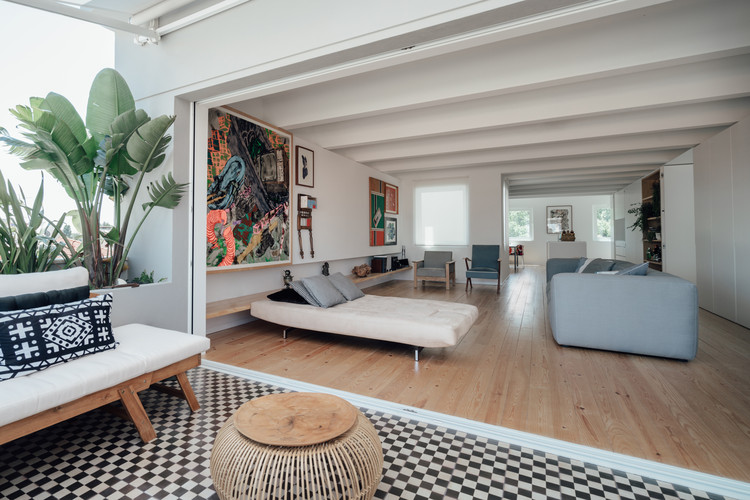
-
Architects: Atelier Data
- Area: 180 m²
- Year: 2016
-
Photographs:Richard John Seymour
-
Manufacturers: DCW EDITIONS, VELUX Group, BRUMA, Berker, CIN, Escenium HAUS, Jieldé, STONEWOOD, Sanindusa, Sapa Building System International NV, TECHNISTONE, Viega

Text description provided by the architects. Set in a Lisbon neighbourhood from the thirties, the apartment occupies the last two floors of a building, benefiting from views that from northeast are headed by urban landscape and from southeast, in turn, are dominated by great canopies of trees that inhabit a secular garden near by the building.





























